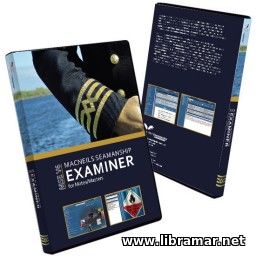Introduction to Load Lines

The "Load Line" is actually a formally accepted term which has been given to a mark normally located amidships on both sides of a vessel in order to show the limiting draft, i.e. the one to which the ship is allowed to be loaded. The limiting value shall be obtained through measuring from the freeboard deck, usually the uppermost continuous weathertight deck of the ship, down to the load line mark. Subject distance is referred to as the ship's Freeboard. The load line mark itself is one of the essential requirements of the ICLL, 1996, standing for the International Convention on Load Lines 1966; in addition, same is required by the Public Law 93-115, 1973 in the United States.
The arrangement of this mark will be governed by the regulations that are issued by the government of the Flag's country, for example the USCG in America. The ICLL, 1966 requires the Administration of each country accepting this convention to provide all facets of load line examination and control. Since it involves continuous knowledge of the ship throughout its life, countries with no inspection staff often delegate portions or possibly all load line activities to classification societies.
Since the load line regulations apply to almost all ships and embody a complete review of the general seaworthiness of the  vessel, it is therefore important that the designer consider not just the desired freeboard but all facets of safety governed by load line regulations early in the preliminary design. The associated calculations, legal assignment, and marking of the minimum allowable freeboard plus the overall seaworthiness evaluation are intended to make sure that the ship:
vessel, it is therefore important that the designer consider not just the desired freeboard but all facets of safety governed by load line regulations early in the preliminary design. The associated calculations, legal assignment, and marking of the minimum allowable freeboard plus the overall seaworthiness evaluation are intended to make sure that the ship:
• has adequate structural integrity for the intended voyages;
• has adequate hull stability for the intended service;
• has a hull confirmed to be watertight from keel and up to the freeboard deck and weathertight above this deck;
• has a working platform located high enough from sea surface, thus allowing for the safe movement on the exposed deck in heavy seas;
• has adequate hull volume and reserve buoyancy, above the waterline - this guarantees that the ship will not be in danger of foundering/plunging when in a very heavy seaway.
The above five basic rules have been the guiding principles for many decisions made during the past century by classification societies and national administrations relative to the proper minimum freeboard for ships of all kinds. The history of official load lines is well documented by the discussions and papers noted in Board of Trade (1906), Norton (1942), and Ryan (1967) for the further guidance of those who wish to review the development of load lines.
The rules for determining the correct freeboard on any particular vessel are not scientifically exact. The freeboards determined under the international rules for vessels on international voyages evolved within the last 100 years. They are completely empirical and were initially based upon experience on vessels up to 91 m in length projected to 137 m in length. After the initial freeboards were set down as national legal requirements in Europe in 1890 they were amended from time to time and the tables extended gradually to lengths up to 229 m in 1915 when vessels still were generally well below that length.
Internationally, there have been only two load line conventions. The first was hosted by the UK back in 1930 and the second one was held in 1966 under the auspices of the UN agency for marine safety, which is the Inter-Governmental Maritime Consultative Organization (IMCO) located in London.
 The five basic rules of load line philosophy mentioned earlier are embodied in an agreed set of regulations published in the International Convention on Load Lines (ICLL, 1966) currently in force. In America, the load lines were originally established by Congress in 1929 for foreign voyages and in 1935 for coastwise and Great Lakes voyages (Public Law, 74-354, 1935). Currently, the ICLL, 1966 is implemented by Public Law 93-115 dated October 1, 1973 which is reproduced in the United States Code 46 USC 86. Subject regulations implementing this law are detailed in the Code of Federal Regulations (46 CFR 42) which constitutes an almost verbatim copy of the technical Annex of the International Convention. All new ships 24 m or more in length which make an international voyage are required to be assigned load lines under this law. Warships, fishing vessels, existing vessels not exceeding 150 gross tons and pleasure yachts are exempted.
The five basic rules of load line philosophy mentioned earlier are embodied in an agreed set of regulations published in the International Convention on Load Lines (ICLL, 1966) currently in force. In America, the load lines were originally established by Congress in 1929 for foreign voyages and in 1935 for coastwise and Great Lakes voyages (Public Law, 74-354, 1935). Currently, the ICLL, 1966 is implemented by Public Law 93-115 dated October 1, 1973 which is reproduced in the United States Code 46 USC 86. Subject regulations implementing this law are detailed in the Code of Federal Regulations (46 CFR 42) which constitutes an almost verbatim copy of the technical Annex of the International Convention. All new ships 24 m or more in length which make an international voyage are required to be assigned load lines under this law. Warships, fishing vessels, existing vessels not exceeding 150 gross tons and pleasure yachts are exempted.
The "Read Later" function allows you to add material to this block with just one click. Just click on the icon and read the articles that interest you at any convenient time.


